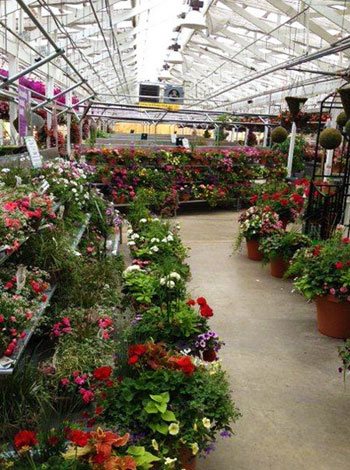Re-think how you market your ornamental plants
What is the value of the plants you grow and sell for the consumer? How do you express their relevancy and authenticity? Here are ideas discussed at the recent Ohio Florist Association ShortCourse.
 What is the consumer’s perspective of our industry? The world has changed a lot since the early days of flower sales. Today the “end consumer” should be the focus of our marketing efforts. Are you marketing to the changing consumer? Most growers and retailers are aware that the Boomers are downsizing to smaller living quarters, which means fewer plantings. Gen X and Y folks have different needs and this age cohort is forming more of the consumer buying power in the nation now. Have you noticed how some restaurants and retailers have changed their image to meet these new demographics? How are you as retailers and growers adjusting to meet these changes?
What is the consumer’s perspective of our industry? The world has changed a lot since the early days of flower sales. Today the “end consumer” should be the focus of our marketing efforts. Are you marketing to the changing consumer? Most growers and retailers are aware that the Boomers are downsizing to smaller living quarters, which means fewer plantings. Gen X and Y folks have different needs and this age cohort is forming more of the consumer buying power in the nation now. Have you noticed how some restaurants and retailers have changed their image to meet these new demographics? How are you as retailers and growers adjusting to meet these changes?
The current message that the greenhouse ornamental plant industry is sending out can be very complex to the average consumer. Successful businesses in today’s world are reflecting their growth based on the newer consumer attitudes such as sustainability, recycling, and buying local. Is your message simple enough for the customer to understand how to be successful with your products?
Today’s grower and retailer needs to provide more information to the customer on how to be successful with the product. Customers like our products but some need to be told why they need them. What are the benefits to their landscape, their health and wellbeing if they include more plants in their landscape?
Here are some additional ideas that came out of the discussion:
Provide customers with more tools for success and they will be buying “solutions” to their life not just plants. For some, plants represent a weekend project with which they need help. Offering solutions can simplify the sometimes complex-appearing addition to the home.
Are you using the latest in social media tools like Pinterest or YouTube videos to create excitement for customers? Just about anything you want to learn how to do has a YouTube video. Identify some that may suit your customers.
Successful sales tools like “new uses for old plants” are helping build sales. Focus on lifestyle trends, for example, use a small apartment mockup in your sales area to give ideas to the non-homeowner. Not everyone has a large yard, so showing how to “scale down” some big ideas can lead to more sales. Think about edibles, ornamentals, and water plants.
Hire and train employees with more skills and background that can tell “The Story” behind the plants you grow and market. Some customers love the local connection because there is a compelling local story there. Highlight the generations involved in your business or your involvement in the community.
Every product has “A Story,” so have stories in mind to sell more products. Tell your customers about their plants: history, use, and novelty. Start the story in the store on a sign and continue that online.
Use language that the common customer can understand – horticulture terms are for the plant geeks! Latin helps professionals communicate, but can be off-putting for the weekender. Use both Latin and common names. Better yet, merchandise plants by location (sun versus part-sun or shade) and by color. That’s how we plant the garden.
Low prices convey a message that our products have little value. Participants in the Ohio short course said, At $2.99 we sold a lot but at $4.99 we sold more! Multiple-unit pricing moves more units (3 for $10 versus $3.35 per unit). Think not just about the cost and mark that up, but think about perceived value. What can you get for this?
Display your products in the retail setting like a Lifestyle Garden display that leaves customers wanting to have that experience in their location. Customers are hungry for inspiration. Use endcaps to your advantage by putting plants in groups and adding suggestions about their use. Vignettes are ideal for this, like a deck or house façade.
Be authentic in all you do! What are the “authenticity” words being used by today’s businesses that you need to incorporate in your operation to show your core values? Words like natural = raw, of the earth, sustainable. Original = heritage, first of its kind. Exceptional = done well, done with feeling, unique. Influential = influencing change. Transformational = help consumers change something about themselves. Tell your authentic story and be a real part of your community.
Finally have a passion for what you do and it will be contagious to your employees and will rub off on your customers. Energy and enthusiasm show your pride in what you grow and what you sell. It can be infectious and a great sales tool!
Dr. Behe's work is funded in part by MSU's AgBioResearch.



 Print
Print Email
Email


